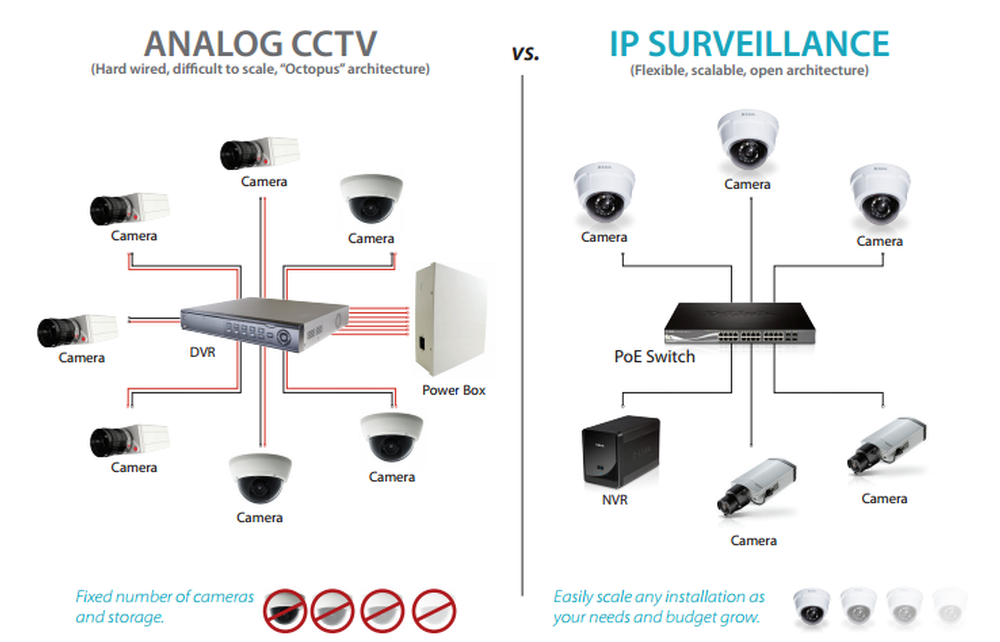Analog vs. Digital Surveillance Systems: A Comprehensive Comparison
- Loxicom
Categories: analog analog cameras Audio Video Integration camera Cameras Commercial AV digital cameras Loxicom loxicom.us management of surveillance remote access Security Surveillance security system Security System Company

Understanding Analog vs Digital Surveillance Systems
Modern surveillance systems play an essential role in maintaining safety and security. With advances in surveillance technology, two prominent types of surveillance have emerged: analog and digital. While both serve the same function of recording activities for monitoring purposes, their individual characteristics make them unique; in this article we aim to offer a thorough comparison between analog and digital surveillance systems, outlining both their advantages and disadvantages while offering insight into circumstances where one system may be more appropriate than the other.
Analog Surveillance Systems:
Analog surveillance systems have been around for several decades and rely on outdated technology. They typically consist of analog cameras connected to a Digital Video Recorder (DVR). Here are some key attributes of analog surveillance systems:
Resolution: Analog cameras typically offer lower resolution compared to their digital counterparts, leading to less detailed photos with reduced clarity. This limitation could reduce clarity as well as decrease detail.
Scalability: Expanding an analog surveillance system is challenging as it often involves additional wiring and infrastructure modifications, creating barriers when covering larger areas or adding more cameras to an existing setup.
Signal Degradation: Over long distances, analog signals may degrade over time and create image distortion and reduced quality. When transmitting these signals over extensive networks, their effectiveness could be severely hampered.
Cost: Analog surveillance systems tend to be more cost-effective compared to digital systems, making them suitable for budget-minded situations where basic surveillance coverage suffices.
Digital Surveillance Systems:
Digital surveillance systems, more commonly referred to as IP (Internet Protocol) or network-based systems, have quickly gained in popularity due to their advanced features and capabilities. These systems utilize digital cameras and network infrastructure for monitoring and recording purposes - offering many advantages over conventional solutions:
High Resolution: Digital cameras offer enhanced resolution that provides higher-quality images with more fine details, which is particularly advantageous when photographing small details or identifying people or objects.
Flexibility and Scalability: Digital surveillance systems are highly flexible and scalable, easily accommodating additional cameras while covering expansive areas by capitalizing on existing network infrastructure. Their scalability makes them suitable for small as well as large installations.
Remote Access and Management: Digital surveillance systems offer the added benefit of remote access and management, enabling users to monitor live feeds, review recordings, and manage the system from any internet-connected location - this feature is particularly convenient for businesses with multiple locations or homeowners looking for ways to keep tabs on their property while away.
Integration and Advanced Features: Digital surveillance systems often integrate with other security systems, such as access control or alarm systems, while offering advanced features like motion detection, video analytics and intelligent search capabilities that enhance overall surveillance effectiveness.
Selecting an Appropriate System:
Opting between analog and digital surveillance systems depends on several variables and your specific situation's requirements. Here are a few scenarios when either system could be more suitable:
Budget concerns: Analog surveillance systems may provide more economical surveillance capabilities at a more reasonable cost than digital systems. They offer basic surveillance features at lower upfront expenses compared with digital systems.
Image Quality and Detail: Situations that demand high-resolution images with fine monitoring capabilities, such as facial recognition or license plate identification, are best served by digital surveillance systems due to their superior image quality.
Scalability and flexibility: Digital surveillance systems offer greater scalability and flexibility when planning for future expansion or covering large areas, accommodating changing needs without substantial infrastructure modifications.
Digital systems offer easier installation while offering higher resolution, scalability, and advanced features. When choosing between digital or analog, factors like budget, image quality requirements, scaling requirements, and remote monitoring capabilities should all be taken into consideration when making this decision.
As part of your assessment, it's crucial that you determine the specific needs for your surveillance needs, considering factors like desired level of detail, area size to cover and budget available. Sometimes combining analog and digital components may also be viable options to maximize their benefits simultaneously.
At its core, surveillance systems aim to increase security and offer peace of mind. When selecting an analog or digital surveillance system manufacturer and working with experienced professionals for installation and maintenance is crucial in order to achieve optimal performance and reliability.
As technology progresses, digital surveillance systems are becoming more widely adopted for their superior image quality, scalability and advanced features. Yet analog surveillance systems still hold their place for specific scenarios where basic surveillance needs and cost considerations remain primary considerations.
Understanding the distinctions between analog and digital surveillance systems enables you to make an informed decision based on your specific requirements, ensuring you select a system which meets both security objectives while staying within budgetary restrictions.